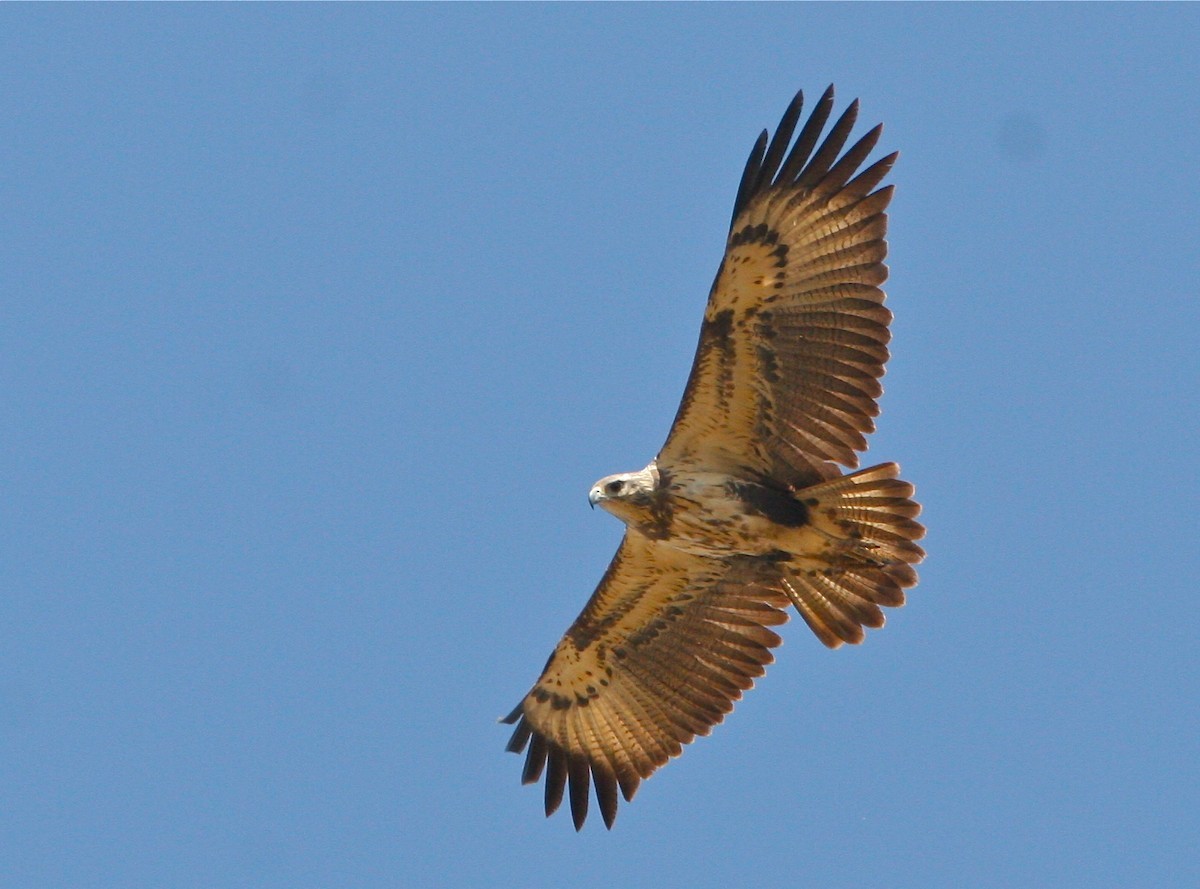Chaco Eagle
A species of Harpyhaliaetus Scientific name : Buteogallus coronatus Genus : Harpyhaliaetus
Chaco Eagle, A species of Harpyhaliaetus
Botanical name: Buteogallus coronatus
Genus: Harpyhaliaetus
Content
Description General Info
 Photo By Don Roberson
Photo By Don Roberson Description
The Chaco eagle is a large raptor with a mostly dull and silvery grey body plumage. Its short black tail has a broad white medial band as well as a white tip and both its cere and legs are yellow. As its name indicates, the Crowned Solitary Eagle has a crest of darker grey feathers. The juvenile also has a crest but its colour dark brown, except for it creamy head and underbody which are both have grey streaks. It is one of the largest raptors in the Neotropics and normally weighs around 3 kg. Its total length can reach 73-79cm and it has a wingspan of 170-183 cm. 
Size
85 cm
Nest Placement
Tree
Feeding Habits
Chaco Eagle consumes a variety of prey, mainly focusing on small to medium-sized mammals like armadillos, skunks, possums, and rodents. Chaco Eagle hunts live prey from perches but will also eat carrion, including roadkill. Less frequently, chaco Eagle's diet includes reptiles such as lizards, snakes, and turtles.
Habitat
Chaco Eagle's natural habitat spans open and semiopen areas, including mixed grasslands, brushlands, savannahs, marshes, and woodlands. These environments are typically found in lowland regions. Large trees are a crucial aspect of chaco Eagle's habitat, providing essential nesting and roosting sites for the species.
Dite type
Carnivorous
General Info
Feeding Habits
Bird food type
Behavior
Often seen in solitary pairs or small groups of three, the Chaco Eagle is a tame crepuscular species that forages during early hours. 
Distribution Area
This bird is endemic to the Americas and can be found in eastern and central South America. It is present in southern and central Brazil, Bolivia, Paraguay and its range extends to Northern Patagonia in Argentina. The status of the Chaco Eagle is uncertain in Uruguay, where it hasn’t been seen in decades and is believed to be extinct. It has been extirpated from portions of its historical range and is found in very low density throughout its range, making it one of the rarest and most threatened raptors in the Neotropical region. Only 250-999 mature individuals are left, while the total individual count of the species reaches 375-1499 birds. 
Species Status
The Chaco Eagle is considered endangered. Its population is declining, a trend that is most likely due to human activities. The Chaco Eagle populations are affected by many threats, including habitat degradation, collisions with human structures and persecution. An example of the latter would be in Argentina, where Chaco Eagles are still killed due to the belief that they attack livestock. Between 1999 and 2014, 30 Chaco Eagles were brought to a rehabilitation center after they had been shot to protect livestock. For such a small population, this can have a great impact on the species’ chances at survival. This persecution attracted the attention of conservation groups, which lead to the creation of a national plan of plan of conservation for the Chaco Eagle in Argentina, the only country to do so so far. Another important factor is the electrocution of Chaco Eagles by power poles, which also has a sizeable impact on their populations. This is also a common problem that unfortunately affects many raptors. 

 Photo By Don Roberson
Photo By Don Roberson